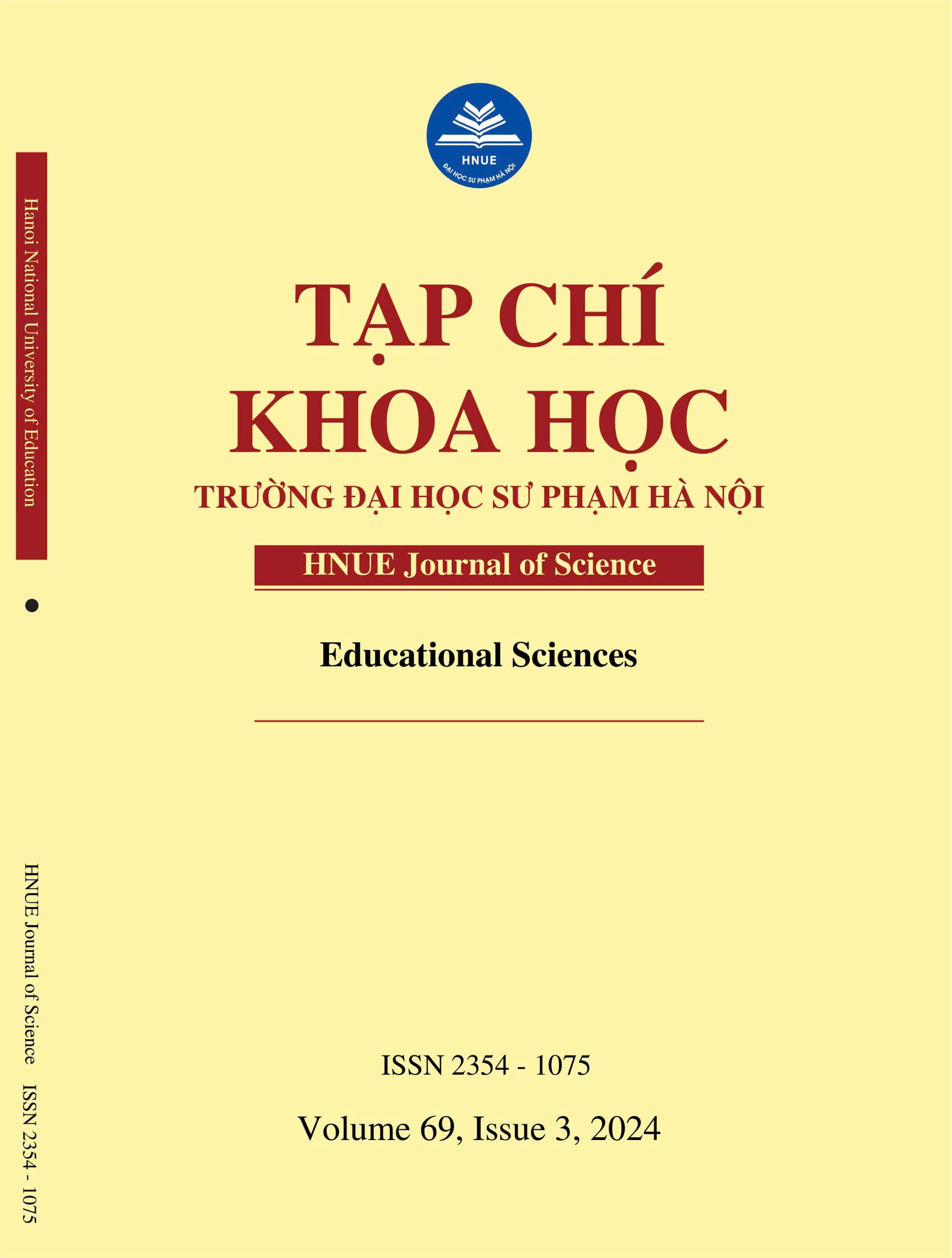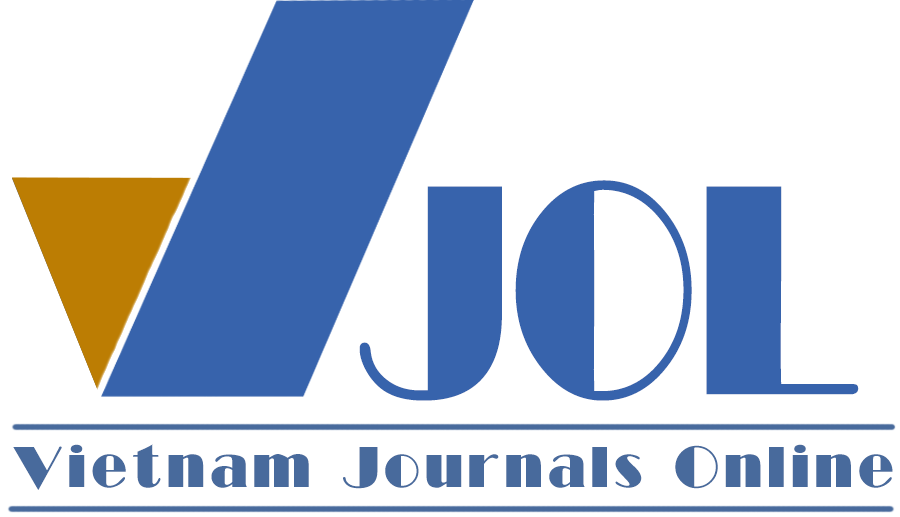AN INVESTIGATION INTO THE EFFECT OF TEXTBOOK ADAPTATIONON SECONDARY SCHOOL STUDENTS’ LANGUAGE PROFICIENCY
DOI:
https://doi.org/10.18173/2354-1075.2024-0050Keywords:
curriculum adaptation, ESL, English textbook adaptation, Vietnamese English learner, Reach EAbstract
To investigate the effects of authentic English textbook adaptation in ESL classrooms, this study analyzes students’ English proficiency levels before and after experiencing an adapted version of National Geographic’s Reach E (2016). It first presents the process of adaptation (based on the Pre-While-Post model); then, it compares students’ scores to demonstrate its impact through a series of statistical tests and interviews with the teacher for more information on students’ in-class behaviors. The results show that students who studied the adapted version of the textbook performed better than their peers did without it. Though other uncontrollable factors are considered, the data and the teacher's perspective suggest that textbook adaptation can bolster students’ language proficiency.
Downloads
References
[1] Alam, J, (2019). Critical Views on Implementing English Language Teaching Curriculum with Native & Non-Native English Language Teachers. International Journal of Learning, Teaching and Educational Research, 8(7), 200-213. https://doi.org/10.26803/ijlter.18.7.13
[2] Alih, N, Yusoff, M, Raof, A, (2020). Teachers’ Knowledge and Belief on the CEFR Implementation in Malaysian ESL Classroom. International Journal of Multidisciplinary and Current Educational Research, 2(5), 126-134. https://api.semanticscholar.org/ CorpusID:231581598
[3] Chi, D, (2017). Issues in the Implementation of Bilingual Education in Vietnam. Hawaii Pacific University, 15, 95-113. https://www.jstor.org/stable/community.31298288
[4] Chou PN, (2020). Incorporating authentic materials into ESL/EFL teaching. TESL Reporter, 53(1), 30-44.
[5] Frey N, Turner J, Short D, Thompson S, Lesaux L & Kratky L, (2017). Reach E. National Geographic Learning.
[6] Irfan D, (2021). Insightful Perspective about Effective Implementation of ESL Single National Curriculum (SNC) in Pakistani Schools. Pakistan Social Sciences Review, 5(1), 975-986. https://api.semanticscholar.org/CorpusID:236750323
[7] Kayi H, (2008). Developing an ESL Curriculum Based on Needs and Situation Analyses: A Case Study. Journal of Language and Linguistic Studies, 4(1), 29-49. https://www.jlls.org/index.php/jlls/article/view/55/55
[8] Le TD & Tran TNT, (2021). English Language Training Curriculum: An Evaluation from Learner’s Perceptions. Open Journal of Social Sciences, 9, 40-57. https://doi.org/10.4236/ jss.2021.93004
[9] Lee J, (2018). The Use of Authentic Materials in Teaching Grammar. Journal of the National Council of Less Commonly Taught Languages, 23, 81-94.
[10] Nguyen A, Le T, Vang M, Phuong Y, Huynh T, Nguyen T & Pham T, (2023). Vietnamese EFL high school teachers’ perceptions of difficulties when implementing competency-based English teaching curriculum and their proposed solutions. Forum for Linguistic Studies, 5(2). http://dx.doi.org/10.59400/fls.v5i2.1863
[11] Nguyen N, (2017). Aligning English for Specific Purpose (ESP) Curriculum with Industry Needs: Language Practices for Vietnam’s Globalised Workplaces. Queensland University of Technology. https://doi.org/10.5204/thesis.eprints.110536
[12] Nguyen, Q, (2021). The Introduction of VSTEP in the Context of Education Reform in Vietnam. Research Gate. https://www.researchgate.net/publication/353508011
[13] Pham T, (2017). Student Language Production, Second Language Tasks, and Instructional Scaffolding in an English-based Curriculum in Vietnam: Realities and Hopes. University of Washington.
[14] R Core Team (2021). R: A language and environment for statistical computing. R Foundation for Statistical Computing, Vienna, Austria. URL https://www.R-project.org/.
[15] Shavkatovna O, (2024). Incorporating Authentic Materials in ESL Curriculum: Enhancing Language Learning. International Scientific Journal, 3(4), 15-22. https://doi.org/10.5281/ zenodo.10938557
[16] Shi L, (2009). Chinese-Western “Contact Zone”: Students’ Resistance and Teachers’ Adaptation to Local Needs. TESL Canada Journal, 27(1), 47-63. https://doi.org/10. 18806/tesl.v27i1.1035
[17] Smith A, (2019). Authentic Materials in Vocabulary Instruction: A Case Study. ELT Journal, 73(1), 22-31. http://dx.doi.org/10.1017/S0261444807004144
[18] Supriyono Y, Saputra Y, Dewi N, (2020). English Immersion Program in EFL Setting: A Modified Model, Implementation, and Effectiveness. Journal of English Education and Linguistic Studies, 7(1), 137-160. https://doi.org/10.30762/jeels.v7i1.1767
[19] Vu T, (2020). English Language Curriculum Reform at the National Level: A Case of Intentions and Realities in Vietnam. The University of Adelaide. https://hdl.handle.net /2440/129584
[20] Yanik A, (2007). A Study of English Language Curriculum Implementation In 6th, 7th, and 8th Grades of Public Primary Schools Through Teachers’ and Students’ Perceptions. Middle East Technical University. https://hdl.handle.net/11511/17283.







